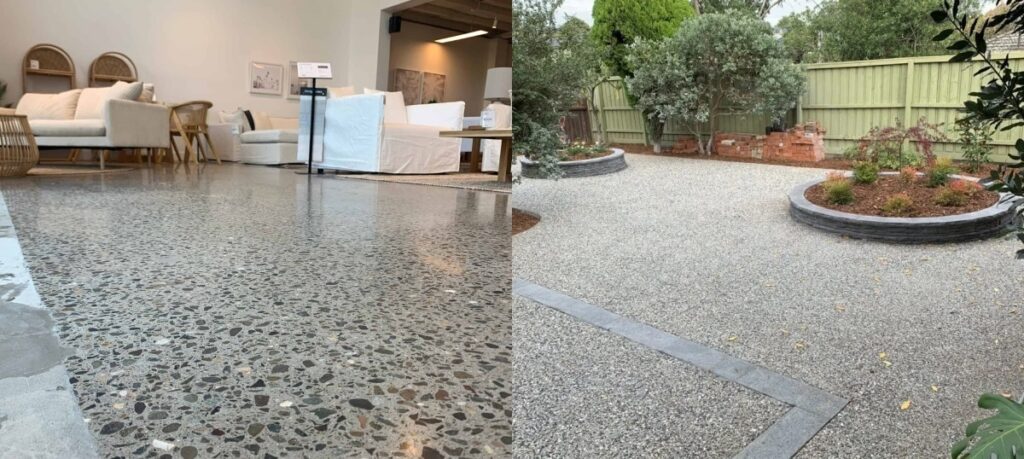Introduction
As urban landscapes evolve, functional and aesthetic infrastructure integration has become paramount. Among the myriad of materials available for urban development, concrete stands out for its durability, versatility, and cost-effectiveness. A shining example of concrete’s utility in enhancing urban connectivity and accessibility is the development of concrete crossovers. These pathways and lifelines facilitate seamless transitions between spaces, embodying practicality and architectural beauty.
The Essence of Concrete Crossovers
What Are Concrete Crossovers?
A concrete crossover is a meticulously designed pathway or bridge to facilitate pedestrian or vehicular movement across various obstacles or within diverse urban environments. These critical structures range from simple, inviting footpaths seamlessly connecting different park sections to intricate and complex networks engineered to ensure safe passage across bustling roads and highways. The strategic choice of using concrete as the primary material in their construction offers unparalleled advantages, including unmatched durability, flexibility in design, and cost-effectiveness. This makes these crossovers not just functional infrastructure elements but also essential components integral to the ethos of modern urban planning. Their ability to blend utility with aesthetics enhances the urban landscape, making concrete crossovers a cornerstone in creating more connected, accessible, and visually appealing urban environments.
Why Concrete?
Concrete’s popularity in constructing crossovers stems from its robustness and longevity. It can withstand extreme weather conditions, heavy traffic, and the test of time, providing a reliable foundation for any crossover project. Additionally, its ability to be moulded into various shapes and textures allows for creative designs that can enhance the aesthetic appeal of the surrounding area.
The Multifaceted Benefits of Concrete Crossovers
The advantages of integrating concrete crossovers into urban infrastructure are numerous, affecting both the environment and the community.
Enhancing Connectivity and Accessibility
One of the primary benefits of incorporating concrete crossover and footpaths into urban infrastructure is the significant improvement in connectivity and accessibility they offer. By providing safe, direct routes for pedestrians and vehicles alike, these essential structures notably reduce travel time and actively encourage walking among the community members. This contributes to a healthier lifestyle by promoting physical activity and is crucial in reducing vehicular emissions. Integrating concrete crossovers and footpaths thus represents a key strategy in developing more sustainable and livable urban environments, making them indispensable elements of modern city planning.
Safety and Security
Safety is a paramount concern in urban design, and concrete crossovers excel in providing secure pathways for users. Their durability ensures that they remain safe to use in all weather conditions. At the same time, designs can be tailored to include features like ramps for wheelchair access, textured surfaces for slip resistance, and barriers to protect users from traffic.
Economic and Environmental Impact
Installing concrete crossovers can also positively impact the local economy and environment. They can lower transportation costs and decrease vehicle emissions by facilitating smoother traffic flow and reducing the need for detours. Furthermore, concrete’s longevity and low maintenance requirements save on repair and replacement costs, making it a cost-effective solution for municipalities.
Implementing Concrete Crossovers: Considerations and Best Practices
While the benefits of concrete crossovers are clear, their successful integration into urban landscapes requires careful planning and execution.
Design and Aesthetics
The design of a concrete crossover should prioritize functionality and consider the aesthetic value it adds to the environment. Innovative designs that complement the surrounding architecture and landscape can transform these structures from mere functional elements to integral parts of a city’s visual identity.
Environmental Considerations
Incorporating green solutions like porous concrete to manage stormwater runoff or integrating landscaping elements around crossovers can enhance their environmental benefits. Such practices create sustainable urban spaces that respect and preserve natural resources.
Community Involvement
Engaging the community in the planning and implementation process ensures that the final product meets the users’ needs and expectations. Public consultations can provide valuable insights into the desired features and design elements, fostering a sense of ownership and pride among residents.
Conclusion
Concrete crossovers represent a vital component of urban infrastructure, offering a blend of functionality, safety, and aesthetic appeal. Their ability to improve connectivity, promote environmental sustainability, and enhance a city’s visual landscape underscores the importance of thoughtful urban planning. As we continue to navigate the challenges of modern urban development, the role of concrete crossovers in creating seamless transitions and fostering cohesive communities cannot be overstated. Their integration into our urban fabric facilitates physical movement and encourages a shift towards more sustainable and livable cities for future generations.


